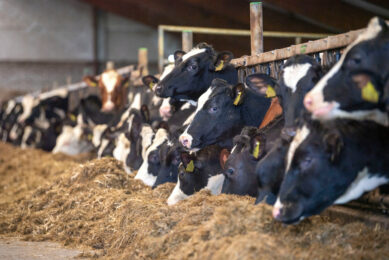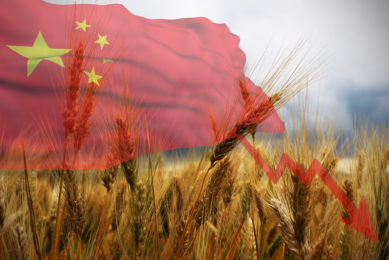Westpac NZ: “Worst is behind us in current milk price cycle”

Westpac NZ has lifted its milk price forecast. “It does seem that the worst is behind us in the current milk price cycle,” senior agri economist Nathan Penny of Westpac NZ says.
“The positive results over the last 4 auctions do signal a clear improvement in dairy markets sentiment,” Penny emphasises. “Whether it will tip further in this direction, time will tell.” According to Penny, the improvement could be due to a number of factors. “Firstly, the low prices of dairy on offer seems to have brought some buyers back to market. Secondly, dairy markets seem to be pricing in an El Niño risk, and the possibility that it will lead to drought over summer and/or autumn. Lastly, we have seen a lift in oil prices in the last few months, and that has led to improved demand from middle eastern buyers.”
Chinese demand
Westpac has lifted its 2023-2024 milk price forecast by 50 NZ cents (29 US cents) to NZ$7.25 (US$4.22) per kg milk solids. “We remain somewhat cautious on the outlook,” Penny points out. “We haven’t seen clear signs yet of improved Chinese demand. Albeit, recent economic data does point to this not being far away. And we think the El Niño risk is being overdone. Pastures in New Zealand are still very wet, water tables are still very high, and there is genuinely ample feed on hand. We also expect that spring production will be firm this year.” New Zealand Dairy giant Fonterra has raised its 2023-2024 season forecast milk price range to NZ$6.50 (US$3.79) – NZ$8.00 (US$4.66) per kg milk solids, up 50 NZ cents 29 US cents). CEO Miles Hurrell says Fonterra is forecasting collections in New Zealand to be slightly below last season, while aggregate milk growth in key export countries is expected to be below average for fiscal year 2024.“On the demand side, we have seen increases in recent Global Dairy Trade events,” Hurrell says. “While this has been encouraging, it is not yet clear whether the stronger demand from China will be sustained. For other key regions, customers remain relatively cautious in terms of their forward purchases.” “It’s still early days in terms of the proportion of our fiscal year 2024 sales book that we’ve contracted, so we still face significant exposure to volatility in commodity prices. Exchange rate volatility is another factor to keep in mind. We’ll continue to let our farmers and the market know as soon as we can when we think things have materially shifted.” Senior analyst Michael Harvey of Rabobank Australia says New Zealand milk production is shaping up for another below-average peak this season. “Milk flows for the first 3 months of the 2023-2024 season show production is almost 2% behind on a tonnage basis, driven by lower North Island collections.”Milk supply
RaboResearch anticipates milk supply growth will slow over the remainder of this year and into next, but a complete market rebalance is still a while off. RaboResearch has lowered its 2023 milk production forecast from the Big 7 export regions. “Milk supply is likely to grow by just 0.3% year-on-year in 2023 – a downgrade from our earlier expectations of 0.5%,” according to the October Commodity Outlooks of Rabobank. “Milk output from the Big 7 for 2024 is likely to climb by just 0.4%, far less than the annual average gain of 1.6% seen between 2010 and 2020.” RaboResearch believes a possible whiplash effect is growing in probability, with demand resurgence potentially emerging before global milk output can recover. “The risk is, if buyer confidence increases and consumers flock back to procure products en masse, the world may find itself short on milk, providing a firmly bullish runway into 2024.”Join 13,000+ subscribers
Subscribe to our newsletter to stay updated about all the need-to-know content in the dairy sector, two times a week.










